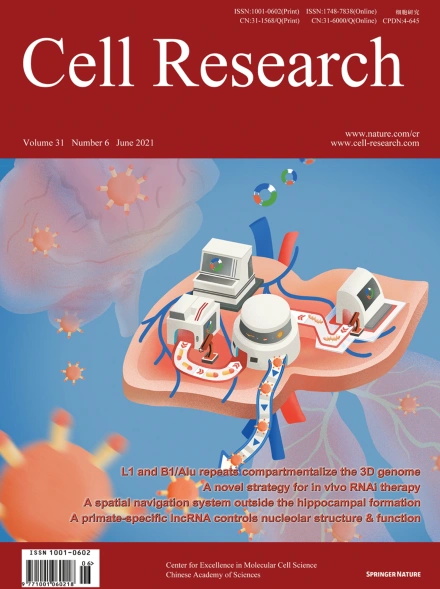
Advanced Search
Submit Manuscript
Advanced Search
Submit Manuscript
Volume 31, No 6, Jun 2021
ISSN: 1001-0602
EISSN: 1748-7838 2018
impact factor 17.848*
(Clarivate Analytics, 2019)
Volume 31 Issue 6, June 2021: 631-648 |
In vivo self-assembled small RNAs as a new generation of RNAi therapeutics
Zheng Fu1,2,3 , Xiang Zhang1 , Xinyan Zhou1 , Uzair Ur-Rehman1 , Mengchao Yu1,4 , Hongwei Liang1 , Hongyuan Guo1 , Xu Guo1 , Yan Kong1 , Yuanyuan Su1 , Yangyang Ye1 , Xiuting Hu1 , Wei Cheng5 , Jinrong Wu6 , Yanbo Wang1 , Yayun Gu3 , Sheng-feng Lu7 , Dianqing Wu8 , Ke Zen1 , Jing Li1,* , Chao Yan1,2,3,* , Chen-Yu Zhang1,* , Xi Chen1,2,3,*
1Nanjing Drum Tower Hospital Center of Molecular Diagnostic and Therapy, Chinese Academy of Medical Sciences Research Unit of Extracellular RNA, State Key Laboratory of Pharmaceutical Biotechnology, Jiangsu Engineering Research Center for MicroRNA Biology and Biotechnology, NJU Advanced Institute of Life Sciences (NAILS), Institute of Artificial Intelligence Biomedicine, School of Life Sciences, Nanjing University, Nanjing, Jiangsu, ChinaRNAi therapy has undergone two stages of development, direct injection of synthetic siRNAs and delivery with artificial vehicles or conjugated ligands; both have not solved the problem of efficient in vivo siRNA delivery. Here, we present a proof-of-principle strategy that reprogrammes host liver with genetic circuits to direct the synthesis and self-assembly of siRNAs into secretory exosomes and facilitate the in vivo delivery of siRNAs through circulating exosomes. By combination of different genetic circuit modules, in vivo assembled siRNAs are systematically distributed to multiple tissues or targeted to specific tissues (e.g., brain), inducing potent target gene silencing in these tissues. The therapeutic value of our strategy is demonstrated by programmed silencing of critical targets associated with various diseases, including EGFR/KRAS in lung cancer, EGFR/TNC in glioblastoma and PTP1B in obesity. Overall, our strategy represents a next generation RNAi therapeutics, which makes RNAi therapy feasible.
https://doi.org/10.1038/s41422-021-00491-z